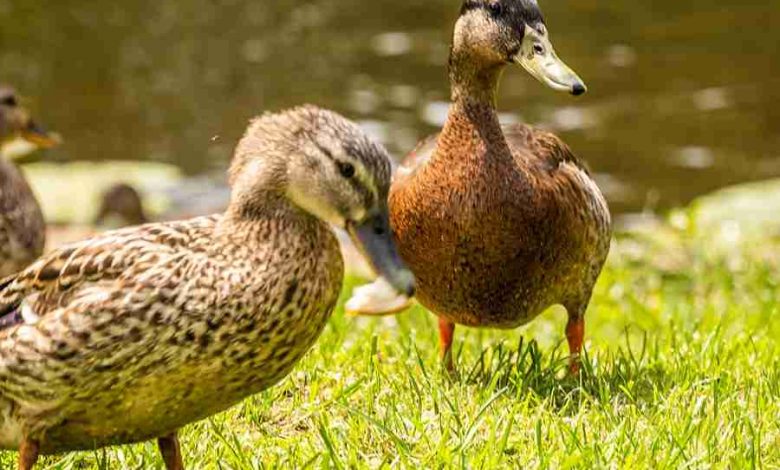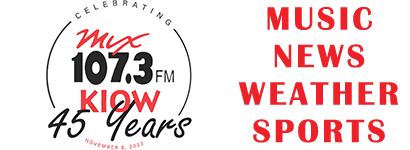
Waterfowlers have waited all year for this: for the next three weekends in Iowa, there will be an opening day for duck and goose hunting. The north zone opens on Oct. 1, the central zone opens on Oct. 8 and the south zone opens on Oct. 15. Each zone is open seven days, then close for seven days, before re-opening.
Hunter success, of course, depends on migration and Mother Nature’s cooperation.
“We’re on track with our 10-year average for migration,” said Orrin Jones, state waterfowl biologist with the Iowa Department of Natural Resources. “The low temperatures we had mid-week likely spurred early migrants and its yet to be seen if it is a net gain or loss for us – hopefully we gain ducks ahead of the opener.”
As part of hunters’ preparation, Jones encouraged them to scout the areas they plan to hunt to check water levels and the status of the launches before opening day.
“Our water levels are variable across the state. Generally, northern Iowa east of the I-35 corridor is not in drought conditions, but there are pockets in severe drought, like in the Sioux City area of northwest Iowa, and in the southeast part of our state. I can’t stress enough how important scouting is ahead of time – nothing can replace putting your eyes on it,” Jones said.
Habitat conditions overall are good, he said, with lots of emergent vegetation, but additional rainfall would help.
As far as duck populations and what hunters can expect in the fall flight, Jones said the counts had been lower this year due to drought conditions in the northern prairie of the Dakotas, Minnesota and Manitoba in 2020 and 2021, but that same area had significant snow and rain in 2022.
“This is the first continental survey that was conducted since 2019 and while the counts were lower, the breeding conditions were good this year which hopefully equates to good productivity and good numbers of young birds in the migration,” he said.
The Iowa DNR conducts a migration survey each week and updates the information on its website, usually by noon on Friday. It also has a report on habitat conditions available. Both reports can be found at www.iowadnr.gov/waterfowl.
Canada Geese
“We had the opportunity this year to re-evaluate and assess how we manage for Canada geese, which resulted in updating part our Canada goose management plan and led to changes for many of the areas closed to goose hunting and to the daily bag limits for geese,” Jones said.
The areas closed to Canada goose hunting in Dickinson, Lucas, Davis-Van Buren and Butler counties were eliminated, and the size of the closed areas in Worth-Winnebago, Guthrie, Adams, Jackson, Bremer and Union counties were reduced. The closed areas in Clay-Palo Alto, Emmet, and Monona-Woodbury counties remain unchanged. Canada goose information including the new maps can be found online at https://www.iowadnr.gov/
The daily bag limit for Canada geese was increased from two to three birds per day beginning with the second segment of the regular season.
New way to register for the Harvest Information Program (HIP)
All hunters who pursue migratory game birds are required to register for Harvest Information Program (HIP) either through the Go Outdoors Iowa app on their smartphone, through a link at www.iowadnr.gov/waterfowl or at www.gooutdoorsiowa.com. The DNR has detailed instructions on how to register for HIP online at www.iowadnr.gov/waterfowl.
Migratory game birds mean more than ducks and geese; in Iowa it includes mourning doves, ducks, geese, coots, doves, woodcock, rails, and snipe.
Once registered, hunters will need to write a confirmation number on their license, print an updated copy of their license with the confirmation or take a screenshot of their confirmation on their phone to show proof of registration. Requiring a confirmation number will allow the DNR to better track migratory bird hunters – a federal requirement.
“Hunters need to be sure not to skip HIP,” Jones said. “If you’re having trouble, call our customer service number and our staff can help to get you registered over the phone.”
The customer service number is 515-725-8200.
Media Contact: Orrin Jones, State Waterfowl Biologist, Iowa Department of Natural Resources, 641-231-1957.
Seasons and Bag Limits
Ducks, Mergansers and Coots
North Zone: Oct. 1-7; Oct. 15 – Dec. 6
Central Zone: Oct. 8-14; Oct. 22 – Dec. 13
South Zone: Oct. 15-21; Oct. 29 – Dec. 20
Bag Limits
Ducks: Daily limit 6, including no more than 4 mallards (of which no more than 2 may be female), 3 wood ducks, 2 redheads, 1 pintail, 2 black ducks, and 2 canvasbacks. Scaup: 1 for first 15 days of the season, 2 for the remaining 45 days.
Mergansers: Daily limit 5, including no more than 2 hooded mergansers.
Coots: Daily limit 15.
Dark Geese and Light Geese
North Zone: Sept. 24 – Oct. 9; Oct. 15* – Dec. 6; Dec. 10 – Jan. 7, 2023
Central Zone: Oct. 1-16; Oct. 22* – Dec. 13; Dec. 17 – Jan. 14, 2023
South Zone: Oct. 8-23; Oct. 29* – Dec. 20; Dec. 24 – Jan. 21, 2023
*Begin three Canada goose daily bag limit
Bag Limits
Dark Geese: The daily bag limit for Canada geese, white-fronted geese, brant and any other geese that are not light geese is 5 and may include no more than 2 Canada geese during the first segment of the statewide season and no more than 3 Canada geese beginning with second segment of the statewide season until the end of the season.
Light Geese: The daily bag limit for white and blue-phase snow geese and Ross’ geese is 20.
Statewide
Doves (Mourning & Eurasian Collared): Sept. 1-Nov. 29; Daily limit is 15
Snipe; Sept. 3-Nov. 30; Daily limit is 8
Rail (Sora & Virginia): Sept. 3-Nov. 11; Daily limit is 12
Woodcock: Oct. 1-Nov. 14; Daily limit is 3
Shooting Hours: 1/2 hour before sunrise to sunset for all species except woodcock which is sunrise to sunset.
Possession Limits: Possession limits are three times the daily bag limit for all migratory birds, except light geese for which there is no possession limit.




